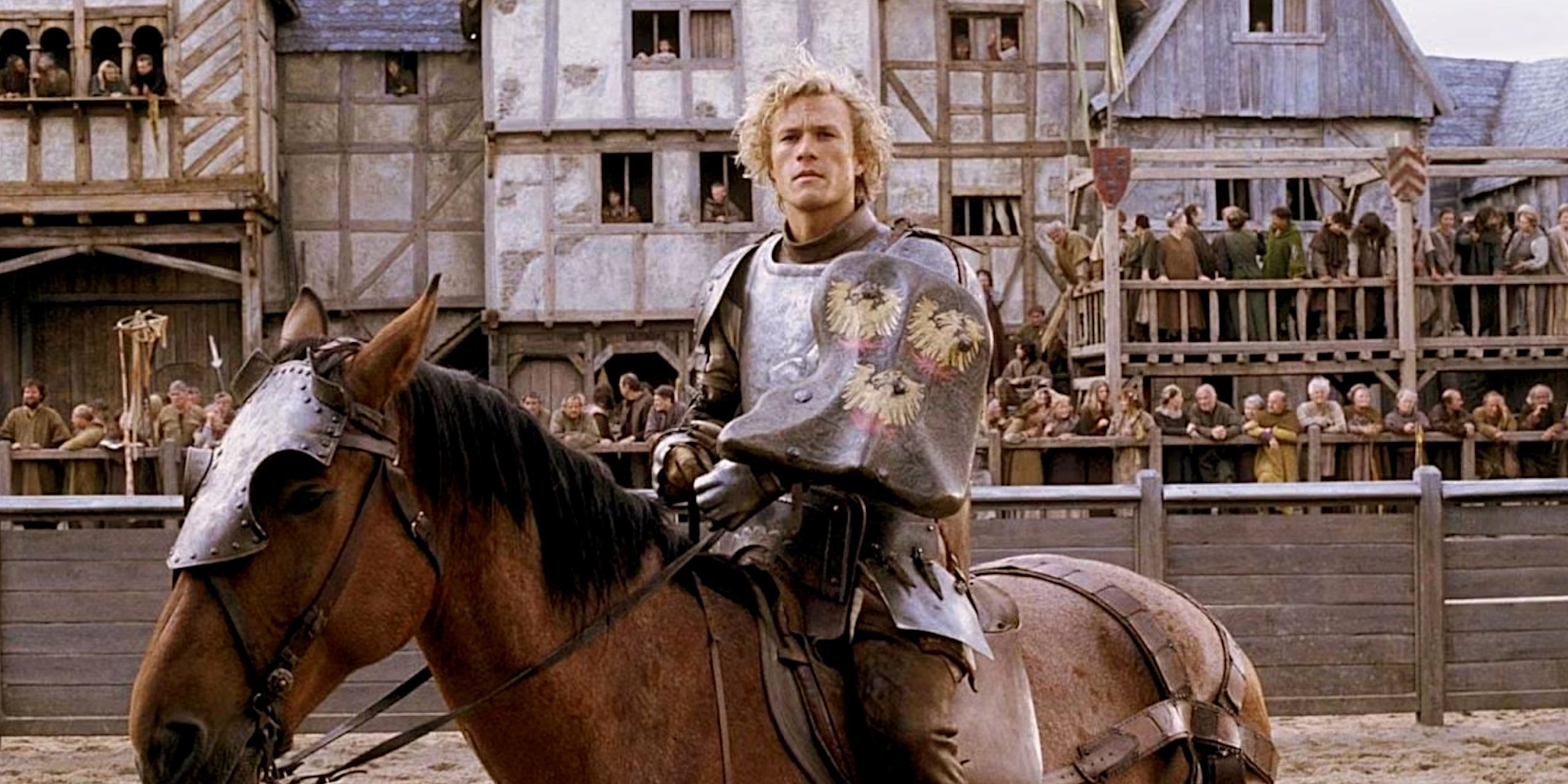
A Knight’s Tale is not a medieval documentary, nor does it pretend to be. Released in 2001 and starring Heath Ledger, the film takes inspiration from Geoffrey Chaucer’s Canterbury Tales but wraps it in a tone and aesthetic closer to a modern sports film than a historical epic. Still, beneath the anachronistic soundtrack and swaggering one-liners, there is a surprising amount of historical texture. The film doesn’t aim for strict accuracy, but it does capture a certain truth about the era’s spirit.
The Historical Foundations
Set in the 14th century, the film centres around jousting tournaments, a form of entertainment and sport that was indeed popular among the European nobility of the time. The depiction of these tournaments is exaggerated for cinematic effect, but the essentials are intact: heralds announcing combatants, code-bound rituals, splintering lances, and the pageantry that accompanied such contests.
Even the central premise, that a commoner (William Thatcher) could pose as a knight and compete, finds some grounding in period reality. While noble lineage was usually a prerequisite for knighthood, records exist of exceptional individuals from humbler backgrounds earning status through merit, especially during times of war or political instability.
The inclusion of Geoffrey Chaucer as a character may seem like a stretch, yet it is oddly fitting. Chaucer did serve as a page, soldier, and later a diplomat, and he travelled widely. His writing bridged the gap between high culture and the vernacular, much like the film’s own tonal balancing act. His presence adds a literary nod without falling into pretension.
The Use of Modern Elements
What most obviously separates A Knight’s Tale from traditional period films is its soundtrack. From Queen’s “We Will Rock You” to David Bowie’s “Golden Years,” the music is anything but medieval. Critics at the time were divided, but the choice works because it doesn’t try to sneak modernity past the audience, it openly embraces it. The soundtrack sets the tone for a film that is less concerned with costume drama conventions and more focused on storytelling energy.
Likewise, the dialogue is peppered with modern phrasing, sarcasm, and banter that would not be out of place in a contemporary comedy. This choice invites viewers who might not normally engage with medieval narratives to connect with the characters on familiar terms.
Costume and Set Design
While liberties are taken, the costume design still hints at real 14th-century fashion. Jocelyn’s gowns borrow from late medieval silhouettes, though they are stylised for visual flair. Armour is similarly based on historical models but is polished to a high shine and tailored to suit the tone of the scenes. The sets are largely grounded, especially the tournament grounds, which capture the scale and spectacle associated with such events.
The film also nods to social structures of the time, feudalism, heraldry, squires and knights, without becoming bogged down in exposition. It maintains a rhythm that prioritises character arcs and emotional payoff.
A Spirit of Chivalry Reimagined
While A Knight’s Tale simplifies and modernises medieval ideals, it retains their essence. Honour, loyalty, and striving against the odds are at the heart of the film, just as they were central to the chivalric code. William Thatcher’s journey, though fictionalised and embellished, mirrors the aspirations of many in the period who wished to rise above their station.
The film uses history as a backdrop rather than a strict framework. It trades realism for accessibility but still leaves viewers with an impression of what medieval life could have felt like in its intensity, its risk, and its communal spectacle.
Seven Swords Takeaway
A Knight’s Tale plays with history rather than bowing to it, but it does so knowingly and with charm. It respects the period enough to build its world convincingly, then breaks the rules in service of pace, humour, and broad appeal. For viewers looking for medieval drama through a populist lens, it manages to be both engaging and strangely authentic, not in every detail, but in spirit.
Watch the documentary:



